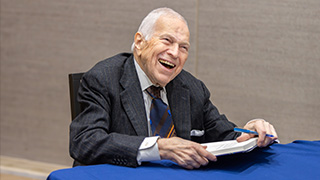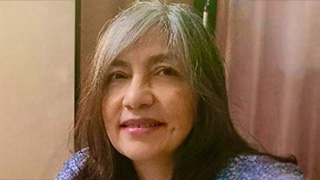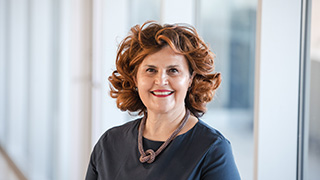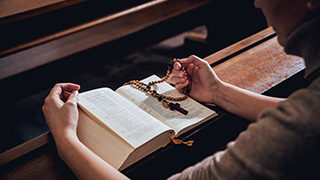Inside the Core: Great Art Reflects
Friday, February 17, 2023
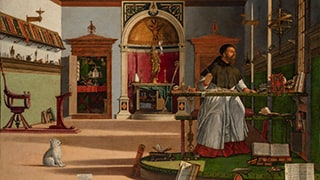
Saint Augustine in His Study shows him looking up from writing at his desk as a flash of heavenly illumination appears, streaming through a window above and lighting up the entire room in a glow of golden radiance. The painting depicts the moment of the death of Saint Jerome, who, now free from mortal limits on human wisdom, has come to Augustine in a vision to instruct him on the ineffable mysteries of the divine; we do not actually see Jerome, just the refulgence of accompanying light that flows into Augustine’s study.
Interestingly, St. Jerome and St. Augustine did not always agree, but this moment transcends any earthly disagreements. They are united in the sublime experience of the divine, and all earthly correspondence regarding translations of the Bible or other issues is swallowed up in the beauty that surrounds them both. Jerome, now in heaven, is experiencing it fully; Augustine, still on earth, in his study shown with enormous detail including even a little dog to keep him company, is tasting it from afar. Butterfield notes that The Confessions was extremely popular in the sixteenth century, and viewers of the painting might easily make connections to passages in it, such as this one, quoted by the reviewer:
Let me enter into my chamber and sing my love songs to Thee, groaning with inexpressible groaning in my distant wandering, and remembering Jerusalem with my heart stretching upwards in longing. (Book 7)
Art can give us a glimpse into the kairos moment of eternity, caught in a moment of chronological time. (The exact time in the painting, as Butterfield notes, is 7 p.m., Compline). But Augustine is taken out of the time of this world into the eternal time into which Jerome has entered. With this painting Carpaccio illustrates the power of art to capture these divine moments that transcend all earthly concerns.
Great literature, particularly that depicting spiritual realities, such as many of the texts we read in the Core, does the same thing, only, instead of painting or drawing them, the writer (like Augustine) depicts them with language. The famous passage from The Confessions epitomizes the timeless nature of God in contrast to the sense of fleeting time experienced by the writer: “Late have I loved Thee, oh, Beauty, so ancient and so new.” In the Core, students get a chance to experience a taste of this connection to truths that truly transcend the things of this world, but offering also a way back into it, enlivened and strengthened by them to confront what needs to be changed in themselves and their environment.
Dr. Marian Glenn, who was one of the faculty who helped to develop the University Core and served for several years on the Core Advisory Board, shows that she is still deeply connected to it. I am so grateful to her for sharing this painting and article with me, and for all she has brought to Seton Hall and the Core throughout the years.
Categories: Education

